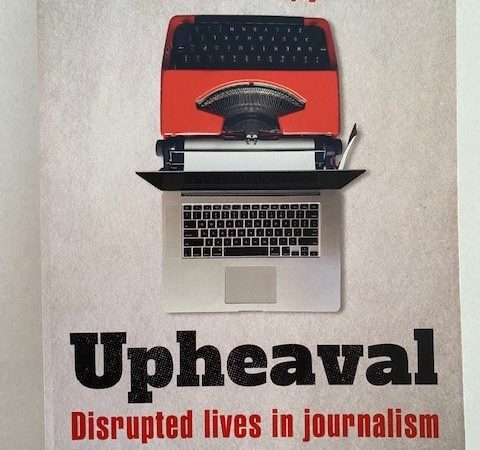Edited by academics, Andrew Dodd and Matthew Ricketson both of whom have also worked in the media, Upheaval: Disrupted Lives in Journalism, is the result of 260 interviews with 57 journalists who, with the exception of one, were made redundant from various Australian media outlets in 2012-2016. Produced with technical support from the National Library of Australia (NLA), the book details people’s shock at going from many years of the hurly burly of journalism to the ranks of the unemployed, and, how fewer numbers and changed dynamics also changed Australia’s media landscape. Covering regional, rural and metropolitan journalists, the book includes details of people’s backgrounds and attraction to journalism. Many reasons were put forward for choosing journalism as a profession: wanting to “represent the voice of the little guy”, document significant historical events, write on subjects about which they were passionate, be at the forefront of world events and big stories. Long-time political and international affairs reporter, Tony Walker, described witnessing history unfold in 1975 when he recorded the immortal words of the just-sacked Prime Minister, Gough Whitlam, on the steps of Canberra’s parliament house. Gillian Lord a former newspaper journalist and academic, and long-time print media journalist and one-time lawyer, Anne Davies, quickly learnt about the power of news with their respective stories on gender re-assignment, and, what it was like to discuss share market issues with high-profile finance people. Interviewees included editors, veteran journalists, photographers, cartoonists, magazine writers, and section editors, from all rounds. Some people were happy enough to leave. But this was not necessarily true for others. Some of the departing journalists obtained work in academia, public relations, other media outlets, politicians’ offices, or in non-government organisations. Hosting an NLA panel recently, Dr Ricketson noted the importance of documenting the stories that taken huge tolls on people’s lives as the ground shifted and journalists felt “knocked sideways”. The chapter “Mate, this gives me absolutely no pleasure, but…”, describes brutality, lack of sensitivity and ruthlessness of some editors and managers towards people who had just been made redundant. “The walk to the lift: Last days at work”, is a reminder of the emotional and human cost of redundancy, including: having no farewells or chances to say “goodbye” to colleagues; the emotional turmoil of packing up personal items; and not even knowing when to leave the building. Not surprisingly, many departees lost respect for managers who had turned a blind eye to the emotional costs to people who were trying to deal with humiliation, having no job, and living with constant uncertainty. The loss for consumers of a reduction in journalist numbers has been marked, including the diminution of specialist reporter numbers in particular policy areas where journalists are well placed to analyse, explain and simplify for their audiences, what can be complex and complicated issues. As Katharine Murphy from The Guardian noted during the panel discussion, because of their training and analytical abilities, journalists are the best-equipped professionals to distil and explain complex issues to everyday Australians. This is important at all times but particularly so for voters at election time striving to make informed decisions. She also noted that with diminishing advertising revenue, most of the big mastheads do not have the resources to employ policy specialist writers, resulting in course of a lowering in the quantity and quality of journalism. According to Steve Lewis (who experienced redundancy), with fewer journalists now in Australian media outlets, journalists increasingly feel under pressure to produce more work, but with less support, and “a lot of the camaraderie of earlier times, is gone from newsrooms”. He suggests that the “gotcha” questions (often directed at politicians), are a reflection of journalists “trying to build their own profile rather than properly do their craft”. Dr Ricketson made the point that in earlier times, younger people in newsrooms benefitted from the stored wisdom of “how-to-do-good-journalism” from the more experienced people. But nowadays the more-senior journalists are no longer there. Apart from bookshops, the publication can be accessed free, via the NLA’s TROVE.
